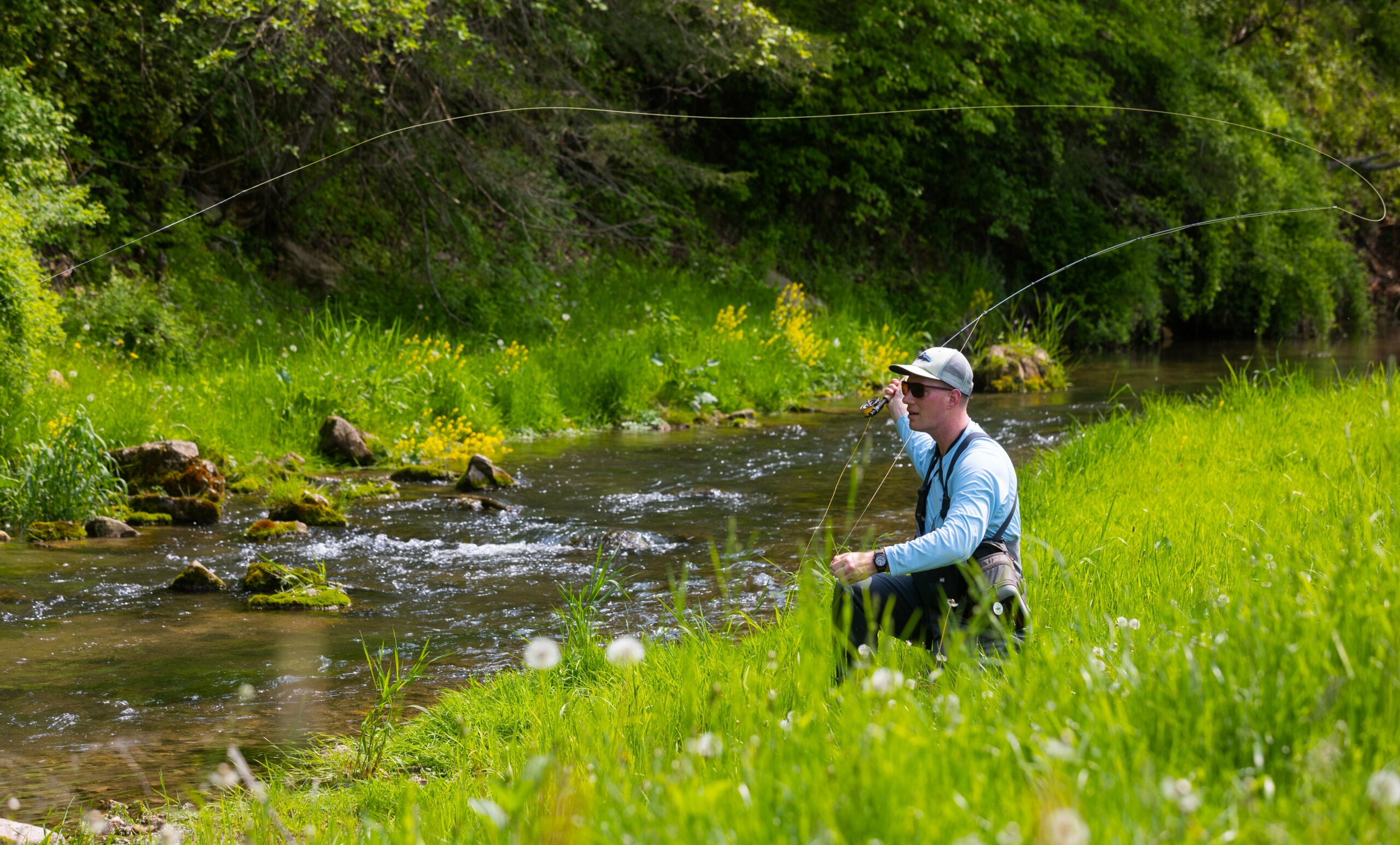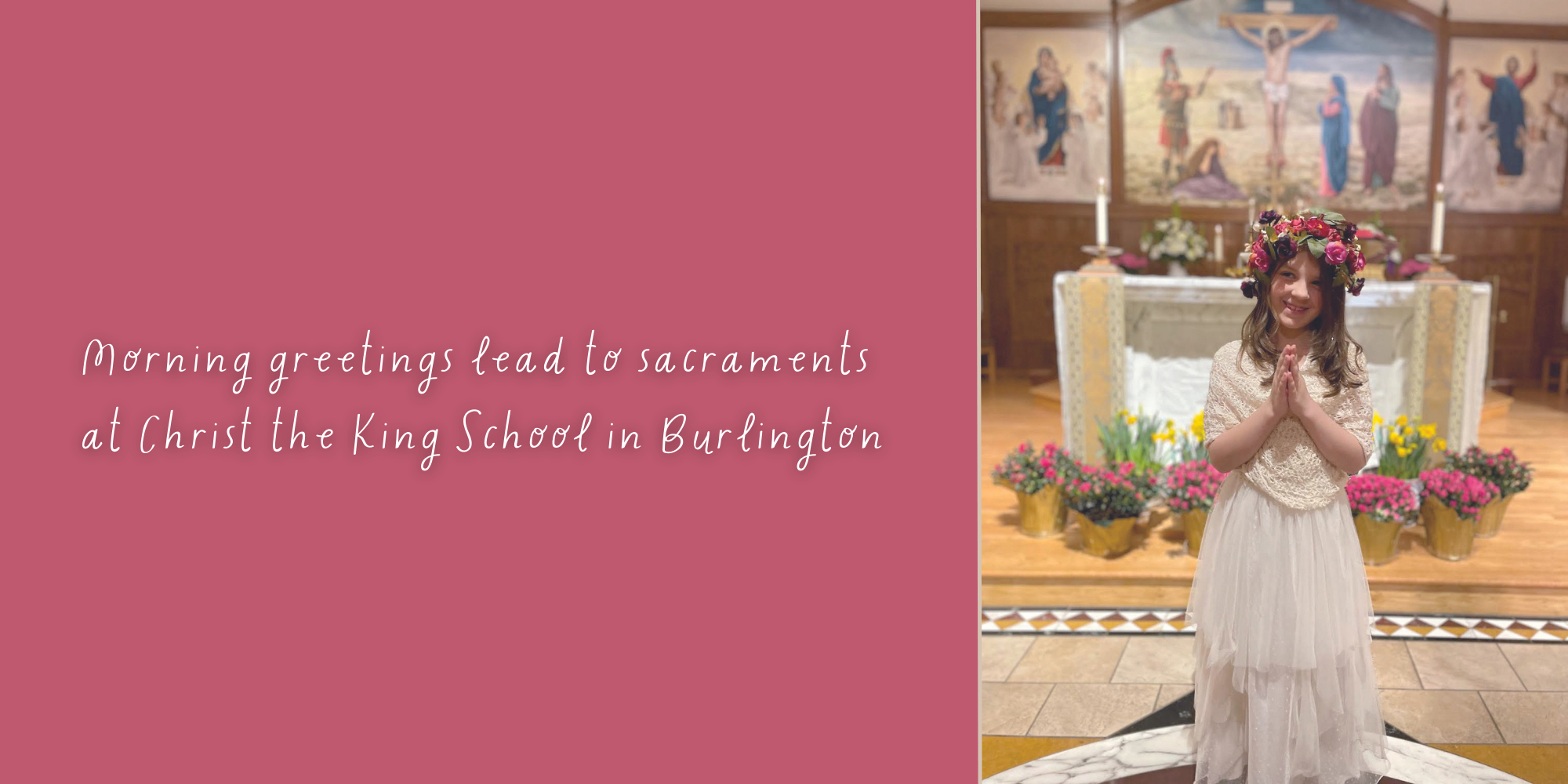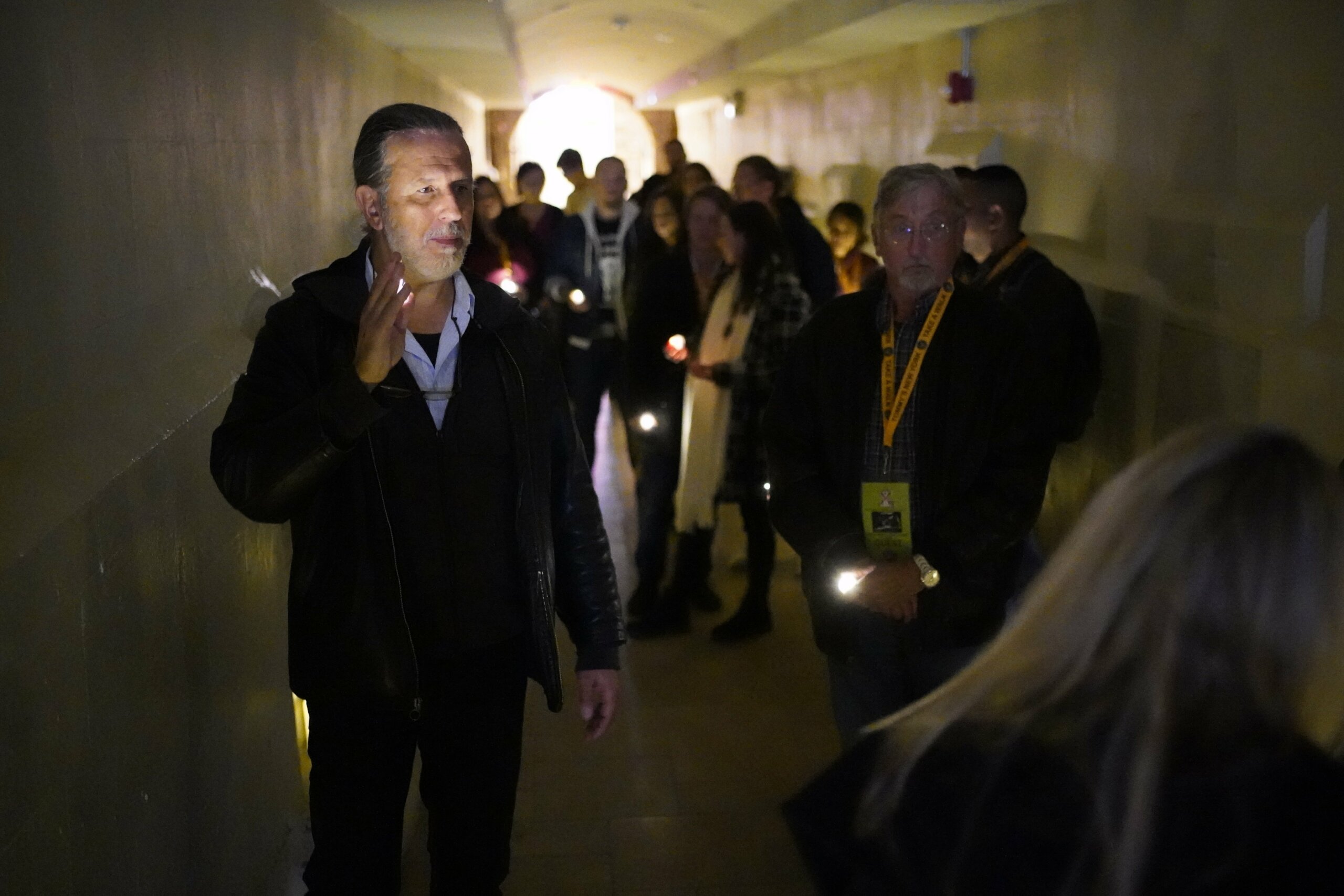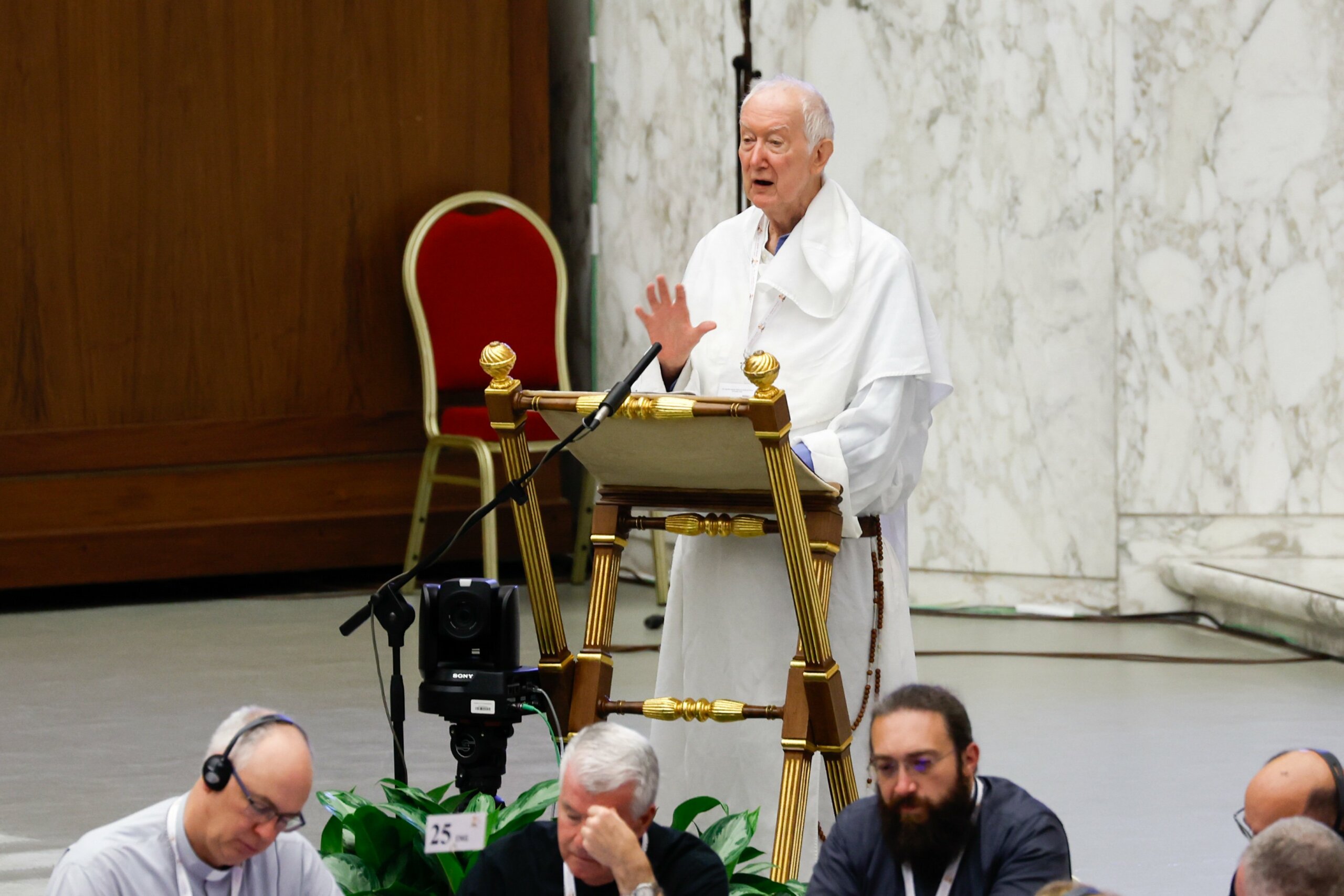
With the stealth of a Navy SEAL, Father Jake Anderson crept through tall grass on the bank of a small stream in northeast Iowa. He stayed low to the ground as he glanced at the current flow, his right hand grasping a fly rod.
When he spotted a change in current where a chunky brown trout might lie in ambush waiting for a bug to float by, he put his fly rod in motion.
The back-and-forth movements were smooth and snappy, the rod seeming like an extension of his arm. The keen attention to detail, the passion for hooking trout on his assortment of hand-tied flies, and more than two decades of experience wading streams in several states have made him an expert in the eyes of anyone who fishes with him — though far less so in his own eyes.
On this particular trip to a state that is home to miles and miles of blue-ribbon trout streams, he was joined by 13 other men, including a priest he has fished with, and another man who was ordained to the priesthood just days after the retreat.
It was an annual men’s fly fishing retreat, complete with a spiritual theme and a patron saint — St. Zeno of Verona, after whom they have named a group they formed, with members going on local outings throughout the year that sometimes include wives and children.
St. Zeno, who lived in the fourth century, often went fishing in the river that flowed through Verona, which is why art depicting him often includes a fish dangling from his crosier.
The 11 laymen at the May 21-24 retreat belong to the parishes of St. Michael and St. Mary in Stillwater, Minnesota, where Father Anderson served as parochial vicar from 2015 to 2018. He was looking for an activity that could draw men together for fellowship, fun and faith, and discovered that there were several parishioners who shared his passion for fly fishing.
Among them was Pat Houlton, 73, who helped get the group — St. Zeno Anglers — started in 2016 and helped Father Anderson launch the first fly fishing retreat four years ago.
Also making the retreat were Father Jim Livingston, whom Father Anderson has fished with in recent years and is pastor of St. Paul in Ham Lake, Minnesota, and now-Father Julian Druffner. (He was ordained to the priesthood for the Diocese of Superior, Wisconsin, May 28).
Ordained in 2015 for the Archdiocese of St. Paul and Minneapolis, Father Anderson, 37, is currently pastor and director of St. Lawrence Catholic Church and Newman Center in Minneapolis.
His devotion to what some call an “art” started when he was 11 and growing up on a small farm near Baldwin, Wisconsin. He remembers exactly when he first desired to pick up a fly rod – it was a day in June when he and his father watched the movie “A River Runs Through it,” a fly fishing drama produced by Robert Redford in 1992 and starring Brad Pitt. It won an Oscar that year for cinematography, with spectacular river and mountain scenes filmed in Montana.
After watching the movie, the future priest was hooked on fly fishing and told his dad he wanted to learn how to do it.
His father, Mark, who has since died, went to the garage, pulled out an old fly fishing rod that he had made while in college, and started teaching his young son how to cast.
Father Anderson “started practicing in the yard,” he said, then he “bought some cheap rubber hip waders.” Wearing the waders, he started making regular trips on his bike to the Rush River, a few hundred yards off their property. He quizzed people who were fly fishing and took copious notes about what he saw and heard; he also poured over books on the subject.
His passion grew and continued through formation for the priesthood at St. Paul Seminary in St. Paul. He got away to fish whenever he could, and grabbed fellow seminarians to join him.
Day trips happened during his free time, and he waded miles of streams with his fly rod in search of trout. He enjoyed teaching other men to fish, but even more, he wanted to “deepen a sense of fraternity.”
This year’s retreat took place May 21-24, with fly fishing sessions in the mornings and afternoons, and retreat talks, prayer and Mass interspersed during other parts of the day. For Father Anderson, it’s as easy to mingle faith with fly fishing as it is to drop a hand-tied fly called a “woodchuck caddis” into a trout’s line of vision.
“We want to just keep it as simple as possible,” he explained in an interview with The Catholic Spirit, newspaper of the Archdiocese of St. Paul and Minneapolis. “It’s not like a retreat center. You’re not going into formal silence and there’s not three meditations a day. It’s more like just taking something guys like doing and yet having the Lord at the center.”
Father Anderson celebrated the retreat’s opening Mass outside on a deck of the large cabin where the men were staying. He engaged them with a homily about the ascension of Jesus, with deep conversations about spiritual and earthly topics continuing through dinner and well after sunset around a campfire.
“There’s something beautiful” about going on the retreat, said Mark Setterstrom, 39, who is married with children and at one time played in the NFL. “I know these men so deeply. There’s such a deep commonality that comes together, not just from the fishing, but (from) spending time together in the Eucharist, in prayer, and then in God’s great creation.”
“This is the most deeply manly thing most of us will get in the entire year,” he added.
For him, it boils down to one thing: “We know Christ through this.”
The men who came this year ranged in age from 28 to 85, and that is part of the draw. Some of them are young fathers who like to fish and pray together with men who have decades of experience in both raising children and working in the professional world. The older men are willing and eager to share what they have learned throughout their lives, including the art of fly fishing.
Houlton, in addition to helping organize the retreat, serves as one of its main fly fishing mentors, a role he relishes.
“It’s just great fellowship,” said Houlton, who counts Father Livingston among those he has taught to fly fish. “As men, we bond through activity. … And, the fly fishing allows us to have an activity that we can share together.”
It also opens the door to more serious topics while sitting around a campfire at the end of the day — like the battle Houlton’s wife, Janet, is fighting with cancer, and the battle his son-in-law’s sister is also fighting with cancer. Fishing first and talking later is, perhaps, an indirect and winding road to the things that matter in life. But, it is a destination these men always seem to reach during the retreat.
“If you put men together in something like this,” Houlton said, “then they will talk more freely and they will talk about things — and, I think, more personal things. It opens that up.”
It is why Houlton declares: “This is my kind of retreat.”
The oldest man at this year’s gathering, Buzz Kriesel, 85, has been on all four of the retreats, and he attends most of the local outings, too.
“They’re all deeply faithful men, Catholic men,” Kriesel said. And “the families that they’re raising — the younger guys — are absolutely amazing.”
During a campfire on the first evening of the retreat, he gave a tribute to Father Anderson.
“God bless you,” he told the priest, as applause broke out among the men encircling the embers. “You’re the glue for this whole thing, you really are. You give us the heart, the spirit — and you out-fish all of us.”
— By Dave Hrbacek, OSV





